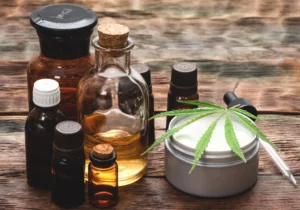In the last few years, it seems as if the call for a solution to the rampant opioid addiction or what is commonly referred to as the “opioid epidemic” has reached a fever pitch — and with reason. Statistics from the Center for Disease Control reveal that more than 650,000 prescriptions for opioids are distributed every single day with more than 4,000 people initiating non-medical or doctor-regulated use daily. And in just 15 years, between 2000 and 2015, the number of prescription opioids quadrupled and more than half a million people lost their lives due to drug overdoses.
FOLLOW US ON FACEBOOK & INSTAGRAM
An Epidemic in the United States
Opioids are substances that are supposed to be used to help reduce or eliminate moderate to severe pain in the body by interacting with the opioid receptors that are distributed throughout the body in the brain, spinal cord and digestive tract. They are a class of drugs that includes natural, synthetic and semi-synthetic prescribed medicines including oxycodone most recognized as OxyContin or Percocet and hydrocodone better known as Vicodin as well as illegal drugs like heroin and opium.
The present opioid epidemic is usually traced back to the 1990s, when both pundits and presidents began expressing a heightened concern over the growing number of adults abusing what was once touted as a wonder drug. Opioids became known for being highly addictive and a driving factor in the large numbers of deaths among communities of color, veterans and other marginalized groups who were not often seen with the same compassion that has been introduced to the cultural conversation surrounding drug abuse and rehabilitation today. Donald Trump has expressed concern for what he considers a unique national emergency affecting the country right now, although it is actually a problem that has been resurfacing again and again since the 19th century.
RELATED: MARIJUANA DOES NOT CAUSE OPIOID ADDICATION
The History of Opioids
The start of opioid abuse begins much further back than just a few decades ago in the 1990s.
The history of opioid use dates back in time to Lower Mesopotamia, when opium poppy was being cultivated in 3400 B.C. Historians have frequently traced the beginning of the abuse problem back to the 19th century following the introduction of morphine to modern medicine in 1817 that changed the medical practice forever.
At the time, morphine was taken orally and took time for the effects to kick in. It often came with unpleasant side effects ranging from vomiting, nausea and constipation to dizziness and respiratory problems including drastically slowed breathing. Still, it wasn’t until a little more than 50 years later in 1870 that opioid abuse began to become a prevalent issue with the emergence of the hypodermic needle, which allowed for almost instantaneous relief from pain due to how it was administered. Although well-meaning, physicians looked to morphine for almost any reason to alleviate their patients pain-related symptoms from significant wounds to menstrual cramps, creating a culture of morphine-addicted patients.
There were also instances where patients were put in charge of administering their own doses of morphine from traveling doctors and medical professionals who only made infrequent visits due to transportation. Unattended and unregulated access to morphine only exacerbated the already-widespread problem and catapulted that era into a opioid epidemic.
Heroin & Morphine
Almost 30 years later in 1898, heroin was introduced commercially as a pain reliever, cough suppressant and non-addictive substitute for morphine addicts. After it was clear the new alternative was also highly addictive, it eventually became illegal in 1924 after the Heroin Act was passed which banned the importation, manufacture and possession of the substance throughout the United States. In 1938, the Food, Drug and Cosmetic Act allowed the FDA to declare that all food, drugs and cosmetics sold to the public needed to be proven safe and free of harm, but still allowed medicines that were derived from opioids and already being sold like codeine, morphine and oxycodone to remain available.
Today, these same substances are being prescribed and abused by patients despite more and more evidence that cannabis can be an effective alternative to traditional opioid treatment for pain. In fact, a seminal study recently released by HelloMD and UC Berkeley shows that 92% of cannabis patients actually prefer to manage their chronic pain using cannabis to opioids, proving that cannabis can be just as effective as prescription pills for physical discomfort.
If you are new to cannabis and want to learn more, take a look at our Cannabis 101 post. HelloMD can help you get your medical marijuana recommendation; it’s 100% online, private and efficient.






